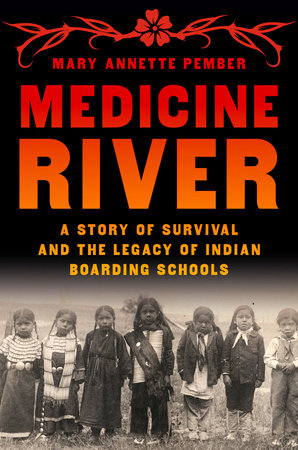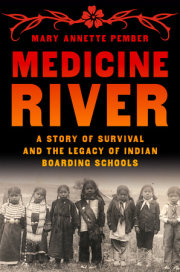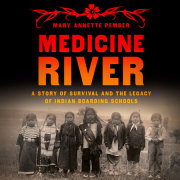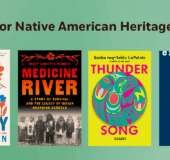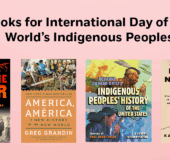In August 2015, four years after my mother’s death, I found myself alone in the vast reading room of the special collections library at Marquette University, in Milwaukee. I was there to find and read archived records of the Sister School: to marry the mother’s milk of the stories on which I had been raised to the facts (obdurate, conclusive) of the historical record. There was the faintest scent of frankincense and wax in the spacious reading room. A receptionist gazed down at me from her perch at the reference desk from behind thick, black-framed glasses. I had traveled from my home in Cincinnati on a sweltering summer day to sift through the university’s trove of records from the Bureau of Catholic Indian Missions, stored and preserved in climate-controlled luxury. The bureau was founded in 1874 by the Catholic Church and was charged with disseminating federal and charitable money to these schools. The organization served to centralize the Catholic Church’s administration of what would become around a hundred boarding schools for Native American children, far more than any other Christian denomination. Although some duplicates of these records are kept by the National Archives, the documents held by the Raynor Library at Marquette are a trove of minutiae, shedding light on the forces that drove Catholic leadership in their extensive work in Indian education. Letters. Receipts. Purchase orders. Administrative addenda. As a professional journalist, I have been researching boarding school history in the United States and Canada for more than twenty years. As the child of a boarding school survivor, there wasn’t a time when I wasn’t, in one way or another, investigating this history. My mother—caught her whole life in the terrible tension of vouchsafing and withholding the details of her experience—had always hated my interrogations.
Why do you always have to go poking? she demanded. Poking is what journalists do. It’s also what children do. I hoped to find my mother’s records, details left out of her stories. Although the day is hot and sticky, the temperature in the inner rooms of the Bureau of Catholic Indian Missions archives was icy cold. I sat at the end of a long oak table and opened the first of many boxes I had requested from the bureau’s archivist. In advance of my trip he had grilled me about my research intentions, and ultimately agreed to my visit and promised to meet with me at the library. But when I arrived that morning, the receptionist explained he’d been called away on a personal matter and wouldn’t be there. He’d arranged to have several boxes of photocopied records available, but, disappointingly, they contained only basic, colorless information: lists of former students who had attended the various schools that once dotted Indian country. The only personal details were check marks in columns indicating whether the students had graduated, run away, or died. I’d hoped to see the original documents, rather than photocopies, and to find students’ report cards or evaluations—really anything that might offer a hint of insight into their lived experiences at the schools.
After I had spent what felt like hours searching through faint, photocopied lists of names, the archivist suddenly arrived, flushed and out of breath. A white man in his mid-sixties, he was a lay employee of the university and helped establish and organize the bureau’s collection there. I sensed my presence amounted to a mild emergency. His hands flapped nervously as he told me repeatedly that many Native people loved their Catholic boarding school experiences, and he informed me that he was an adopted member of the Ho-Chunk Nation of Wisconsin. He described the education style at the schools as examples of “tough love.” Thankfully, my inner journalist silenced my shock; I needed to hear all this man had to say. I’d brought my and my mother’s proof of tribal enrollment, as well as her birth and baptismal and death certificates. He examined the documents closely. Unlike the National Archives, the holdings here are considered a private collection and access is discretionary. Once it became clear I wasn’t going away, he finally explained that even the original collection—its documents yellowed with age—held very little personal information about any of the students who had attended the Native American boarding schools so long ago. The documents were largely administrative, related to ensuring funding from Indian trust and treaty funds continued to flow to the schools and the bureau. They focused primarily on bureaucratic exchanges between the men and women who ran the schools, offering little insight into the lives of the students themselves.
But I’d be happy to share them with you, he said halfheartedly.
I could see he hoped I’d decline and leave, but I’d come all this way and felt I might as well take a look at what they had.
Why not? I asked with a polite smile. He soon brought out another cartload of cardboard file boxes, which, as promised, contained mostly bureaucratic reports and correspondence between generations of boarding school principals and the Bureau of Catholic Indian Missions in Washington, D.C. There was nothing in the dry letters and reports concerning the people I most wanted to learn about, the students. Just as I was about to give up, twenty minutes before the library was set to close, I pulled out a folder that was marked “Saint Mary’s School.” My breath caught in my throat. This was a name that haunted my childhood, the setting of my mother’s most disturbing bedtime stories. Slowly opening the folder, I found a yellowed, typewritten letter dated January 3, 1934. It was addressed to the Right Reverend Monsignor William Hughes, the director of the Bureau of Catholic Indian Missions, from Sister Mary Macaria Murphy, the sister secretary of St. Mary’s. My eyes scanned down the page:
By the time these lines reach you, our dear Mother Superior Sister Catherine will, no doubt, have been called to her eternal reward. On December 19, she fell off the second last step leading down to the kitchen entry.
She must have pitched forward with great force, for in striking her head against a windowsill; a gash was cut in her forehead by the temple of her glasses. On Friday Dec. 29, the Sister nurse noticed a change in Sister’s condition and told us she feared a stroke.
Our dear sister had convulsions, was anointed and has been speechless since. The doctor says it can hardly be but a matter of a day or so at most if she does linger even that long.
We know you will pray earnestly for her eternal repose and for a speedy relief from her sufferings. Sorrowfully yours in the agonizing Heart of Jesus.
Sister MacariaWhen I reached the end of the letter, I stood straight up out of my chair. Startled, the receptionist widened her eyes; she seemed to consider calling for help. I smiled at her weakly. Reassured but on alert, she returned her gaze to her computer. Once I recovered myself, I quickly went through the contents of the box again. I found an original photo of Sister Catherine. Covered from head to toe in her black-and-white nun’s habit, she gazed sternly into the distance through thick, wire-rimmed glasses. The air-conditioned room was icy, but I was sweating as I read the remaining documents in the St. Mary’s file.
I knew Sister Catherine long before I saw her photograph in the archives that day. When my mother’s migraines eased during those claustrophobic afternoons of my childhood, she called to me. Crawling out from my place under the kitchen table, I’d find her lying in the dark, with one arm thrown over her eyes; the other arm open for me. Silently, I’d climb onto the bed, fitting myself into her armpit and gazing at the tiny blue Virgin Mary medal pinned to her brassiere, a remnant of her boarding school days. Her deep voice slid over me in the bedroom on those late summer afternoons as she, as she had done hundreds of times before, told me her “Sister School” stories. They almost always included stories about the evil nun Mother Superior Sister Catherine of the Franciscan Sisters of Perpetual Adoration, who was the principal of St. Mary’s Indian boarding school. She described the nun’s inexplicable cruelty—the beatings, the shaming, and the withholding of food. She told of the harsh work schedule and how, obsessed with cleanliness, Sister Catherine forced the children to refinish the huge dining room hall by using shards of glass to remove the old finish from the wood. On their hands and knees, the children formed a line, working backward as they scraped away the old varnish into heaps of dust. When I listened to this familiar litany of the nun’s harsh ways, I snuggled closer to her in anticipation. At last, the mood of her story lifted, and her voice took on the conspiratorial tone that I loved.
One year during the Christmas season, Sister was marching down the cellar steps to check if we stole any food, she said. She fell on the bottom step—crash! She hit her head bad! Not long after, she died.What a silent cheer us kids made! she continued.
Maybe it was terrible, but it was the best Christmas present we ever got! She clasped her hands together and laughed. Reading the letter, I finally knew that Sister Catherine’s death had occurred exactly as she had described it to me. I had understood that story, and the others, as real-life terrible fairy tales. Later they became part of some nameless ongoing ceremony as she tried to work through and make sense of the senseless past at St. Mary’s. But she could never diminish their control over her; so instead she passed them on to me. Padded, as they were passed down, with imagined moral lessons, for my benefit as much as her own. Surely the tale, with its juicy moral reward, I thought, couldn’t be true. But what had always been a kind of fairy tale when told by my mother had merged, with the help of archives, into fact. If I sometimes had doubts about my quest, events such as verifying the Sister Catherine story drove me onward.
I didn’t understand my mother while she was alive. I’m not sure I understand her now. I’m not even sure I understand my obsessive drive to uncover her past. But I need to understand all of it in order to live; in order to move forward as an Indian woman in the world and as a mother to my own children. In order to do that—to continue—I need to go back into the history of the Sister School, back even further into the history of Indian education, and into my mother’s life and my own and our relationship with each other. I need to know her, to understand all that happened. This book is, I suppose, above all, a quest. To understand myself, our family’s collective disease, Indian people’s unparalleled ability to survive, and the history of Indian boarding schools.
Copyright © 2025 by Mary Annette Pember. All rights reserved. No part of this excerpt may be reproduced or reprinted without permission in writing from the publisher.

